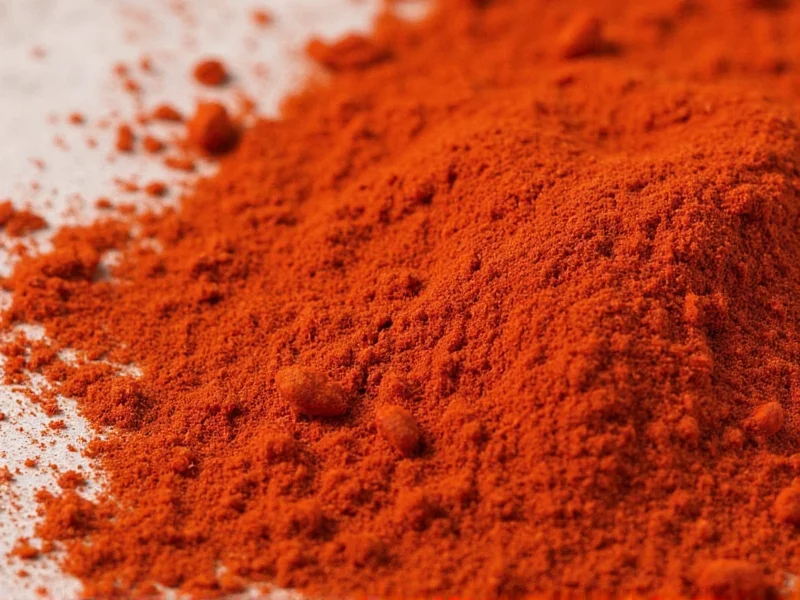Understanding the nuances between paprika varieties prevents recipe mishaps and ensures authentic flavor development. Many home cooks encounter confusion when recipes call for “regular paprika” without specifying which type, leading to uncertainty about proper substitutions and flavor outcomes.
Decoding Paprika Terminology
The confusion between regular and sweet paprika stems from inconsistent labeling practices across regions and manufacturers. In the United States, “regular paprika” typically means the sweet variety, while in European markets, particularly Hungary (the spiritual home of paprika), labeling tends to be more specific about heat levels and regional origins.
Sweet paprika, also known as “normal” or “mild” paprika in some regions, contains zero Scoville heat units. It's made from sweet red peppers that are dried and ground, providing rich color and subtle sweetness without any spiciness. This variety serves as the foundation for many traditional dishes across Central Europe, particularly in Hungarian cuisine where paprika is a national treasure.
Understanding Paprika Varieties
Paprika isn't a single uniform spice but rather a spectrum of varieties differentiated by heat level, smoking process, and regional characteristics. The primary categories include:
| Paprika Type | Heat Level | Flavor Profile | Common Uses |
|---|---|---|---|
| Sweet/Regular | 0 SHU | Earthy, slightly sweet, fruity | Goulash, chicken paprikash, deviled eggs |
| Hot (Erős) | 500-1,000 SHU | Spicy with underlying sweetness | Spicy stews, meat rubs, chili variations |
| Smoked (Pimentón) | Varies (sweet or hot) | Deep smoky, wood-fired notes | Paella, roasted vegetables, barbecue rubs |
| Sweet Hungarian | 0 SHU | Complex, rich, slightly sweet | Traditional Hungarian dishes, sauces |
Regional Differences in Paprika Labeling
The term “regular paprika” creates particular confusion because its meaning shifts across borders. In American supermarkets, “regular” almost always means sweet paprika. However, in European markets, particularly in Hungary where paprika production is a centuries-old tradition, labeling follows a more precise system:
- Edés (Mild): The standard sweet variety equivalent to American “regular” paprika
- Fele-erős (Medium): Moderately spicy with some heat
- Erős (Hot): Contains noticeable heat
When shopping for paprika, always check the packaging for specific heat indicators or regional designations. Premium Hungarian paprika often specifies whether it's from the Kalocsa or Szeged regions, each offering distinctive flavor profiles due to terroir differences.
Can You Substitute Regular for Sweet Paprika?
Since regular paprika typically is sweet paprika, substitution between these two is generally seamless. The real substitution challenges arise when recipes call for specific paprika varieties and you need alternatives:
- Sweet for hot paprika: Use half the amount of sweet paprika plus a pinch of cayenne
- Hot for sweet paprika: Not recommended unless you want added heat
- Smoked for sweet paprika: Creates a different flavor profile; use only if smokiness complements the dish
- Sweet paprika alternatives: Tomato paste + pinch of cumin (for color and earthiness without heat)
When substituting, consider the role paprika plays in your specific recipe. In traditional Hungarian goulash, sweet paprika provides both color and foundational flavor that smoked varieties would dramatically alter.
Maximizing Paprika Flavor in Cooking
To get the most from your sweet/regular paprika, follow these professional techniques:
- Bloom in fat: Heat paprika in oil or butter for 30-60 seconds to release flavor compounds
- Add early for depth: Incorporate during the sauté phase for deeper flavor integration
- Add late for brightness: Stir in near the end for more pronounced paprika flavor
- Store properly: Keep in an airtight container away from light and heat to preserve flavor
Freshness matters significantly with paprika. Ground spices lose potency over time, so check your paprika's aroma—it should smell sweet and earthy, not dusty or stale. Properly stored, sweet paprika maintains peak quality for 1-2 years.
Identifying Quality Sweet Paprika
Not all sweet paprikas deliver equal quality. When selecting a product, look for these indicators of premium sweet/regular paprika:
- Bright red color (dull brown indicates age or poor quality)
- Clean, sweet aroma without mustiness
- Regional designation (Hungarian, Spanish, etc.)
- Harvest year on packaging (fresher is better)
- Single-origin labeling when possible
High-quality sweet paprika should dissolve smoothly in liquids without leaving gritty residue. When sprinkled on deviled eggs or potato salad, it should provide vibrant color without overwhelming heat—the hallmark of authentic regular/sweet paprika.











 浙公网安备
33010002000092号
浙公网安备
33010002000092号 浙B2-20120091-4
浙B2-20120091-4